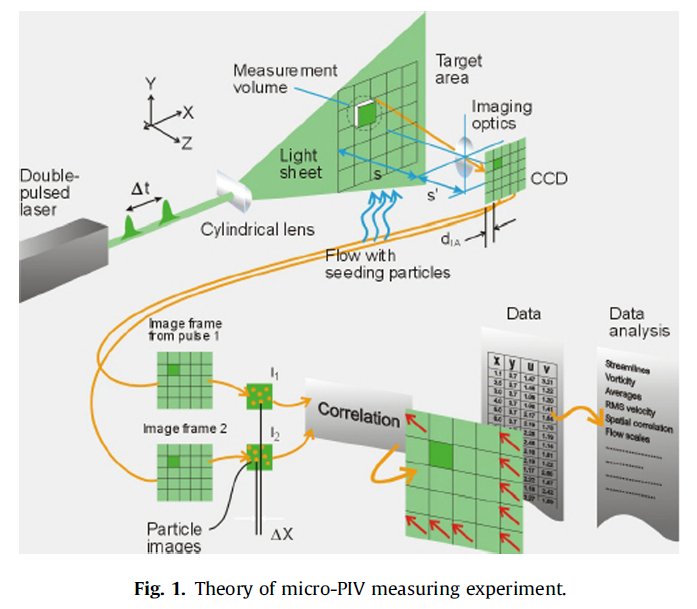In this paper, flow characteristics in open rectangular microgrooves were investigated by micro-PIV. Liquid cross-sectional areas and central thickness of the liquid film of the meniscus along the axial direction of the microgroove were both studied. The results show that there is a ‘dead zone’ near the end of the recession stage where the fluid does almost not flow. Under the same heat flux condition, liquid cross-sectional area decreases with increase of the inclined angles in the same axial cross-section. Under the same inclined angle, liquid cross-sectional area decreases along the axis of the microgrooves heat sink. Under different inclined angles condition, liquid cross-sectional area in corner flow stage of rectangular microgrooves heat sinks decreases along the axis. Liquid cross-sectional area in corner flow stage increases as the inclined angle increases at the same directional cross-section. Central thickness of the liquid film of the meniscus reduces along the axis under the same heat flux condition; central thickness of the liquid film of the meniscus decreases with the increasing heat flux at the same axial cross-section.
Conclusions
Micro-PIV technique was used for visualization investigation on capillary flow characteristics in open rectangular microgrooves heat sinks, and velocity field in corner flow stage, the liquid cross-section and central thickness of the liquid film along the axis of the microgroove were also discussed. Some interesting conclusions are drawn as follows:
1. Under the same heat flux condition, liquid cross-sectional area decreases with increase of the inclined angles in the same axial cross-section; the fitted results of the liquid cross-sectional area along the axis of the microgroove vary as a conic curve along the axis. Under the same inclined angle, liquid cross-sectional area decreases along the axis of the microgrooves heat sink.
2. Under different inclined angles condition, liquid cross-sectional area in corner flow stage of rectangular microgrooves heat sinks decreases along the axis. Liquid cross-sectional area in corner flow stage increases as the inclined angle increases at the same directional cross-section. Inclined angle has greater effect on the liquid cross-sectional area of accommodation and recession stages than that in corner flow stage.
3. Central thickness of the liquid film of the meniscus reduces along the axis under the same heat flux condition; central thickness of the liquid film of the meniscus decreases with the increasing heat flux at the same axial cross-section.
The results have been published on Applied Thermal Engineering 106 (2016) 906–915.
